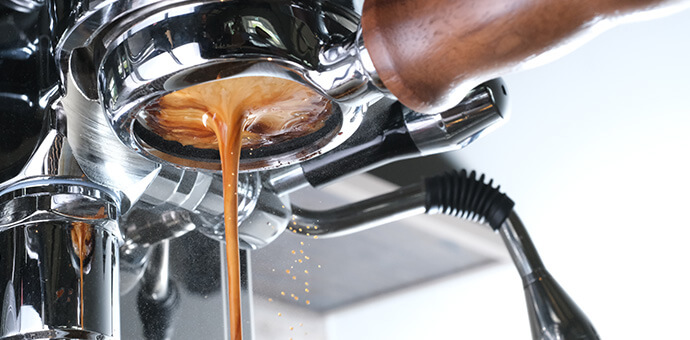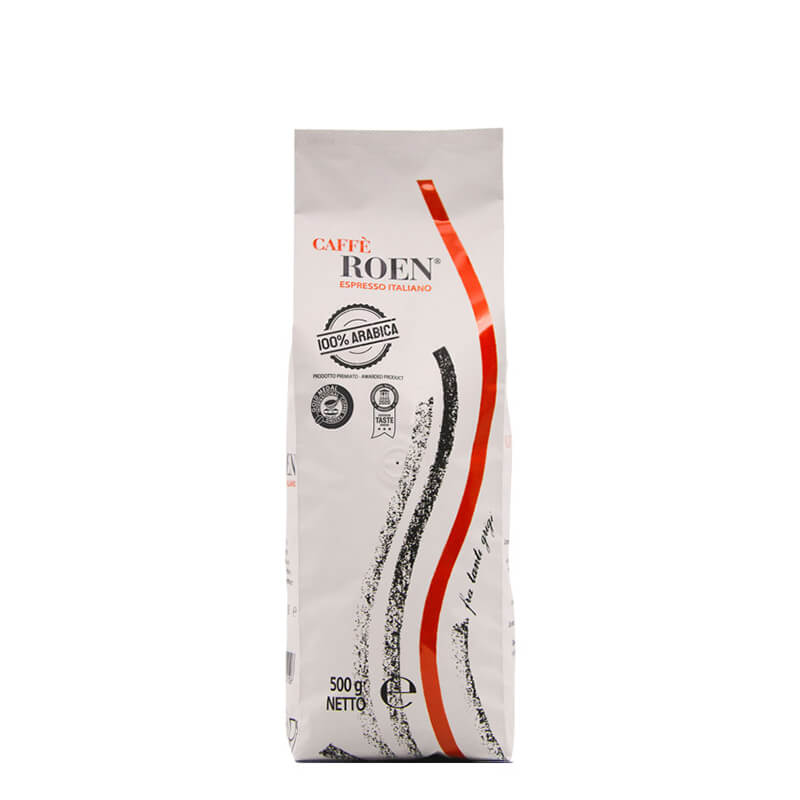

EXTRACTION PHASES
THE SECRET BEHIND OPTIMAL ESPRESSO EXTRACTION
"Espresso extraction" is one of the magic words in the search for the ideal espresso preparation and the perfect taste experience that comes with it. This is because this process is one of the most important factors for a great espresso, along with the correctly selected amount of coffee. During the extraction process, the aromatic substances are released from the coffee grounds, thus forming the basis for an aromatic and full-bodied taste. The espresso extraction time is one of the most important factors in this process: If it is too short, it is an under-extraction; if it is too long, it is an over-extraction. So what exactly is important?


WHY IS EXTRACTION SO IMPORTANT?
Before moving on to espresso extraction, a look at the composition of ground coffee or coffee powder illustrates the importance of this process. Coffee contains 30% water-soluble substances, while the remaining 70 % is largely formed by fibers. The refinement now lies in extracting the accurate amount of soluble ingredients: a value known as the extraction rate. Decades of research have shown that this guideline value is ideally 18 to 22 of the soluble 30 %. If the extraction rate is right, the result will delight with its balance of acidity and bitterness - the basic prerequisite for exquisite taste.
WHAT HAPPENS DURING THE EXTRACTION OF ESPRESSO?
During extraction, the coffee grounds of the roasted beans come into contact with hot water. This now extracts the water-soluble ingredients in the order of their solubility - this is referred to as the extraction phases. Each of these three phases lasts about eight seconds: During the first, the acids are dissolved, in the second the aromatic substances, and in the course of the third the bitter substances. This last phase also produces the crema, whose hazel color and firm consistency are already the first visual indicator of a successful espresso.
The brewing time should be between 20 and 30 seconds. This rough indication of seconds is intended to give a first indication to avoid getting an under-extracted or an over-extracted espresso. In addition, the most important "tools" to influence the brewing time are the tamping, the amount of coffee grounds and the grind.
The extraction phases of an espresso can be divided into three phases:1st phase approx. second 1-8: acids.
2nd phase approx. second 9-16: aromatic oils
3rd phase approx. second 17-24: bitter substances
On average, the roasted coffee bean contains 18-30% soluble ingredients, depending on the grind and preparation method. The optimum extraction rate for espresso is 20 % ± 2 %. The ingredients are not all extracted at the same time during preparation, but according to their solubility. After the first drop, a constant volume rate is established which, with the correct particle size and dimensioning of the machine, produces the desired cup of espresso in 25 ± 5 seconds.
1. first, the acids and esters dissolve out of the coffee grounds.2. the coffee oils and lipids are then emulsified by the pressure and the typical crema is produced.
3. finally, the bitter components of the coffee dissolve and pass into the espresso.
HOW DO YOU RECOGNIZE OVER- AND UNDER-EXTRACTION?
In addition to the extraction rate, there is another essential factor for perfect espresso taste. In the form of extraction time, this indicates how long the contact between coffee grounds and water lasts and thus summarizes the total duration of the extraction phases. You can recognize an under-extraction by the fact that the espresso tastes watery, has too little body and the aroma leaves much to be desired. Its crema is light, lacks firmness, throws bubbles and dissolves quickly. In this case, the espresso extraction time was too short, at around 20 seconds for a 30 milliliter quantity. If, on the other hand, you experience a bitter, strong taste with woody notes and a weak aroma, this suggests over-extraction. A dark brown, thin crema that quickly runs towards the edge of the cup to reveal the dark espresso in the middle is the visual sign of this. The reason for this is that the extraction time is too long - over 30 seconds for 30 milliliters of espresso.

For the balanced extraction of espresso, we recommend a brewing ratio of 1:2, at which two grams of espresso are extracted per gram of ground coffee. In this way, 15 grams of ground coffee results in 30 milliliters of espresso, whose taste becomes an experience with an extraction time of around 27 seconds. Don't be surprised at the sometimes different results if you use different beans to prepare your espresso and try your hand at it. The type of coffee and the degree of roasting of the beans are factors that have a strong influence on the taste of your espresso and must be mastered again and again. Our knowledge pages will provide you with all the information you need to become a barista yourself and make your favorite coffee specialties just the way you want them!


CONCLUSION
The correct extraction phase is crucial for good espresso preparation. In the total of 3 extraction phases of coffee preparation, different flavor components of the coffee bean are dissolved in each case. An accurate estimation and combination of the extraction phases gives a coffee result with perfection.
DISCOVER EVEN MORE COFFEE KNOWLEDGE
Discover the big universe of the small coffee bean with us. With exciting topics around coffee and espresso we present you interesting and worth knowing topics from the world of coffee. Immerse yourself with us and become an absolute coffee nerd yourself.
GRIND
The grind is crucial for a perfect preparation, small adjustments make a big difference.
ROASTING
Roasting completes the taste of the coffee bean - the differences of a coffee roasting.
FLAVOR WHEEL
Read all about a perfect classification of the aroma world of coffee - Discover the aroma wheel.





























